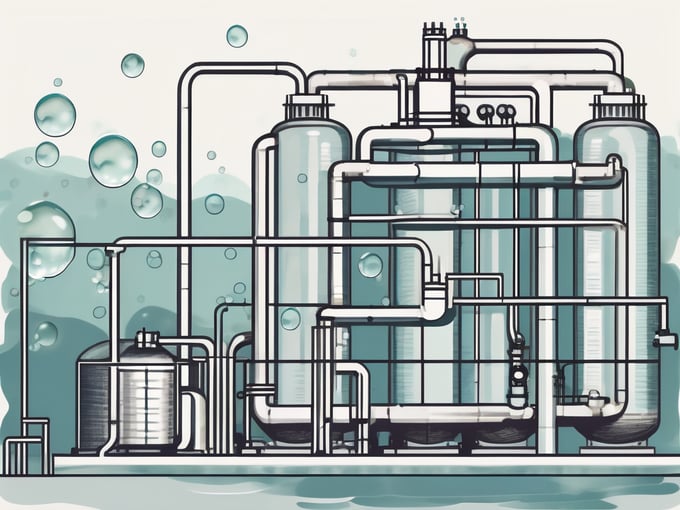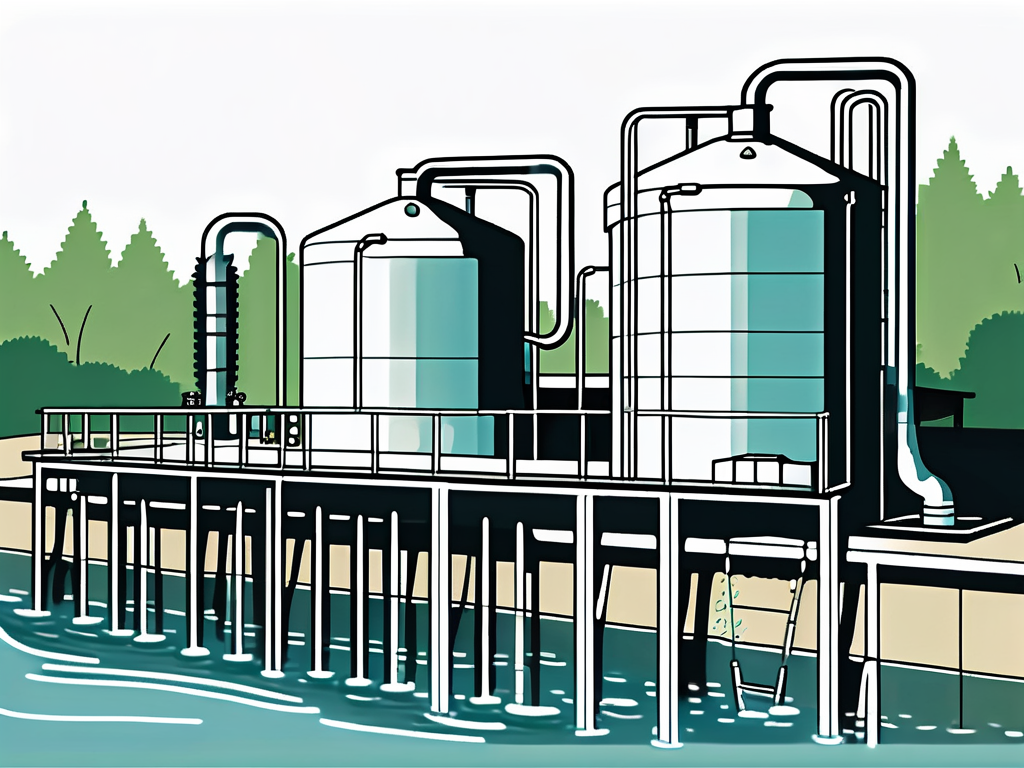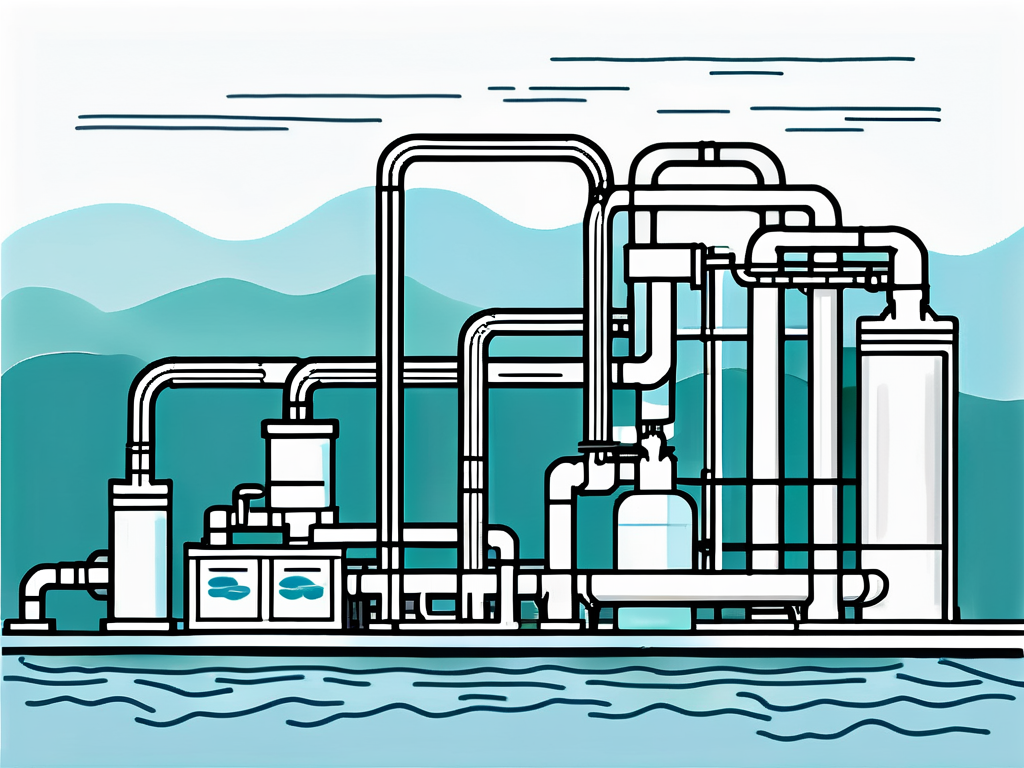
Dissolved Oxygen: Wastewater Treatment Explained
Dissolved oxygen (DO) is a critical component in the process of wastewater treatment. It refers to the level of free, non-compound oxygen present in water or other liquids. It is an important parameter in assessing water quality because of its influence on the organisms living within a body of water. A dissolved oxygen level that is too high or too low can harm aquatic life and affect water quality.
The presence of DO in water is a result of diffusion from the surrounding air, aeration of the water as it tumbles over falls and rapids, and as a waste product of photosynthesis from aquatic plants. In wastewater treatment, DO is essential for the breakdown of organic material by bacteria, a process known as aerobic digestion. Without sufficient DO, this process cannot occur effectively, leading to poor treatment outcomes.
The Importance of Dissolved Oxygen in Wastewater Treatment
The presence of dissolved oxygen is a critical factor in the biological treatment of wastewater. This is because the microorganisms that break down organic waste, known as aerobic bacteria, require oxygen to survive and function. Without adequate DO levels, these bacteria cannot effectively break down organic waste, leading to inefficient treatment and potential pollution issues.
Furthermore, the level of DO in wastewater can influence the types of organisms present. For example, high levels of DO support more complex life forms such as fish and invertebrates. On the other hand, low levels of DO can lead to the growth of anaerobic bacteria, which can produce harmful byproducts such as hydrogen sulfide, a toxic gas with a characteristic rotten egg smell.
Monitoring Dissolved Oxygen Levels
Monitoring the levels of DO in wastewater treatment systems is crucial to ensure optimal operation. This is typically done using a DO probe, which measures the amount of oxygen that is dissolved in the wastewater. These measurements can then be used to adjust the aeration process, ensuring that sufficient oxygen is provided for the aerobic bacteria.
It's important to note that DO levels can fluctuate throughout the day and night, due to changes in temperature, pressure, and biological activity. Therefore, continuous monitoring is often necessary to maintain optimal conditions. Modern wastewater treatment plants often use automated systems to continuously monitor and adjust DO levels.
Adjusting Dissolved Oxygen Levels
There are several ways to adjust the levels of DO in a wastewater treatment system. One common method is through aeration, which involves pumping air into the wastewater to increase the amount of oxygen. This can be done using mechanical aerators, which churn the water to mix in air, or diffused aeration systems, which release tiny bubbles of air into the water.
Another method is through the use of pure oxygen, which can be injected directly into the wastewater. This is often used in situations where high levels of DO are needed, such as in the treatment of industrial wastewater. However, this method is more expensive and requires more complex equipment than aeration.
The Role of Dissolved Oxygen in Different Stages of Wastewater Treatment
Dissolved oxygen plays a crucial role in various stages of wastewater treatment. It is involved in both primary and secondary treatment processes, and its presence or absence can significantly affect the efficiency and effectiveness of the treatment.

In the primary treatment stage, DO helps in the sedimentation process where solids settle at the bottom of the tank. The oxygen helps to break down the organic matter in the solids, reducing the amount of sludge that needs to be disposed of. In the secondary treatment stage, DO is even more critical. Here, it supports the aerobic bacteria that break down the remaining organic matter in the wastewater.
Primary Treatment
In the primary treatment stage, wastewater is held in a quiescent basin where solids can settle to the bottom and oil and lighter substances can rise to the top. These settled and floating materials are then removed and the remaining liquid may be discharged or subjected to secondary treatment. Even though this process is primarily physical, DO plays a role in the breakdown of organic matter in the settled sludge.
By maintaining adequate DO levels in the primary treatment stage, the amount of sludge that needs to be disposed of can be reduced. This not only decreases the cost of sludge disposal, but also reduces the environmental impact of the treatment process.
Secondary Treatment
The secondary treatment stage is where DO plays its most crucial role. In this stage, wastewater is aerated to promote the growth of aerobic bacteria. These bacteria consume the organic matter in the wastewater, converting it into carbon dioxide, water, and energy for their own growth and reproduction.
By maintaining optimal DO levels, the efficiency of this biological process can be maximized. If DO levels are too low, the bacteria may not be able to break down all the organic matter, leading to poor treatment outcomes. On the other hand, if DO levels are too high, energy may be wasted in unnecessary aeration.
Effects of Temperature and Pressure on Dissolved Oxygen
Temperature and pressure are two factors that can significantly affect the level of DO in water. As the temperature of water increases, its ability to hold oxygen decreases. Therefore, in warmer temperatures, less oxygen can be dissolved in water. Similarly, at higher pressures, more oxygen can be dissolved in water.
These factors are important to consider in wastewater treatment, as they can affect the efficiency of the treatment process. For example, in hot climates or during summer months, aeration may need to be increased to maintain adequate DO levels. Similarly, in high-altitude areas where atmospheric pressure is lower, more aeration may be needed.
Temperature Effects
As mentioned earlier, the solubility of oxygen in water decreases as the temperature increases. This is because warmer water molecules move faster and are less able to hold onto oxygen molecules. Therefore, in hot climates or during summer months, maintaining adequate DO levels can be a challenge.
It's also important to note that the metabolic rates of aerobic bacteria increase with temperature. This means that they consume oxygen more quickly at higher temperatures. Therefore, not only is less oxygen able to dissolve in the water, but the oxygen that is present is used up more quickly.
Pressure Effects
Pressure also affects the solubility of oxygen in water. At higher pressures, more oxygen can be dissolved in water. This is because the increased pressure forces more oxygen molecules into the water.
This effect is particularly noticeable at high altitudes, where atmospheric pressure is lower. In these areas, maintaining adequate DO levels can be a challenge, as less oxygen is able to dissolve in the water. Therefore, wastewater treatment plants in high-altitude areas may need to use more intensive aeration methods to maintain adequate DO levels.
Conclusion
In conclusion, dissolved oxygen plays a critical role in the treatment of wastewater. It supports the aerobic bacteria that break down organic matter, making it a key factor in the efficiency and effectiveness of the treatment process. Monitoring and adjusting DO levels is therefore crucial in any wastewater treatment system.

Furthermore, factors such as temperature and pressure can significantly affect DO levels. Therefore, these factors need to be considered when designing and operating a wastewater treatment plant. By understanding and managing the role of DO in wastewater treatment, we can ensure that our water resources are treated effectively and sustainably.



